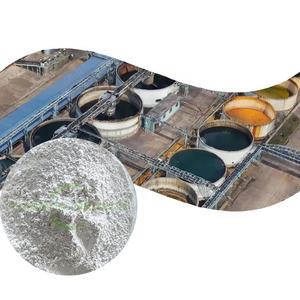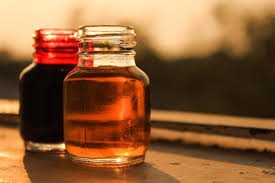Overview of Polymer Polyol Pop 10% 15% 25% 45% for Flexible Sponge Foam
Polymer surfactants, also known as polymeric surfactants or amphiphilic polymers, are high-molecular-weight compounds that combine the properties of traditional low-molecular-weight surfactants with the unique features of polymers. Unlike small molecule surfactants, polymer surfactants offer enhanced stability, improved solubility, and the ability to form more complex structures such as micelles, hydrogels, and vesicles. These macromolecules find applications across a wide range of industries due to their tailored structures and tunable properties, which allow for precise control over interfacial behavior and solution rheology.
Features of Polymer Polyol Pop 10% 15% 25% 45% for Flexible Sponge Foam
-
Molecular Weight and Structure: With a much higher molecular weight, polymer surfactants offer enhanced stability in harsh conditions and over prolonged periods compared to small molecule surfactants.
-
Tunability: The structure of polymer surfactants can be precisely engineered to include different functional groups, monomer sequences, and architectures, allowing for specific interactions and properties.
-
Multifunctionality: Apart from surface activity, they can also provide additional functionalities like thickening, rheology modification, and controlled release capabilities.
-
Self-Assembly: Capable of forming sophisticated self-assembled structures like micelles, hydrogels, and vesicles, which can encapsulate or release active ingredients in a controlled manner.
-
Environmental Compatibility: Many polymer surfactants are designed to be biodegradable and less toxic, making them suitable for eco-friendly applications.
-
Temperature and pH Responsiveness: Some polymer surfactants exhibit responsive behavior to changes in temperature or pH, enabling stimuli-responsive systems.

(Polymer Polyol Pop 10% 15% 25% 45% for Flexible Sponge Foam)
Specification of Polymer Polyol Pop 10% 15% 25% 45% for Flexible Sponge Foam
Polymer Polyol Pop (POP) with differing polymer material (10%, 15%, 25%, 45%) is created for adaptable sponge foam manufacturing. This product boosts foam structure, boosts load-bearing capacity, and improves toughness in output. The polymer material directly impacts foam thickness and suppleness. Higher percentages produce denser, firmer foams suited for heavy-duty applications. Reduced portions yield softer, extra adaptable foams optimal for comfort-focused usages.
The material works with typical polyurethane systems. It works with basic processing tools. Makers use it to produce slabstock, shaped foam, and rebonded foam items. The polymer bits in POP enhance foam cell wall surfaces. This results in much better resistance to contortion over time. Foams made with POP maintain form under repeated stress. They also show improved tear stamina compared to conventional polyols.
Secret requirements include thickness ranges tailored for very easy handling. POP 10% has reduced viscosity for applications needing fine cell framework. POP 45% uses greater viscosity for dense foam solutions. Hydroxyl values are gotten used to match reactivity demands. Water content is managed listed below 0.1% to prevent undesirable reactions during lathering.
Flexible foam producers pick POP based upon end-use requirements. Furnishings pillows commonly utilize 15% or 25% grades for balanced soft qualities and support. Automotive seats may require 25% or 45% for high resilience. Cushion mattress toppers benefit from 10% or 15% for luxurious feeling. The item’s flexibility allows customization of foam residential properties like airflow, compression collection, and rebound resilience.
Storage space suggestions consist of maintaining drums secured in completely dry, cool problems. Shelf life is generally 6 months when saved effectively. Safety guidelines highlight utilizing gloves and safety glasses during handling. Appropriate air flow is required to stay clear of vapor breathing.
Technical assistance is readily available for formula adjustments. Manufacturers can ask for examples to check compatibility with existing systems. Batch uniformity is ensured via strenuous quality assurance protocols. Manufacturing centers should follow regional policies for chemical handling and disposal.

(Polymer Polyol Pop 10% 15% 25% 45% for Flexible Sponge Foam)
Applications of Polymer Polyol Pop 10% 15% 25% 45% for Flexible Sponge Foam
Polymer polyol POP with concentrations of 10%, 15%, 25%, and 45% works as a vital product in generating flexible sponge foam. The item improves foam efficiency by boosting elasticity, resilience, and load-bearing ability. Different concentrations accommodate particular industrial demands.
The 10% polymer polyol POP develops light-weight foam with a soft structure. This kind fits applications needing comfort and breathability. Common usages include cushion toppers, cushion inserts, and low-density upholstery. The reduced focus guarantees cost performance while preserving standard adaptability.
The 15% polymer polyol POP uses an equilibrium between softness and strength. Foam made with this quality withstands modest damage. It works well in child seat paddings, couch extra padding, and ergonomic supports. The mid-range concentration supplies much better long life than the 10% variation without giving up convenience.
The 25% polymer polyol POP generates firmer foam with higher load-bearing ability. This kind takes care of heavy-duty applications. Instances include commercial padding, gym floor covering, and machinery insulation. The increased polymer web content enhances compression resistance, making the foam appropriate for recurring stress.
The 45% polymer polyol POP provides optimum density and strength. Foam from this quality withstands severe pressure and rough atmospheres. It is optimal for automotive shock absorbers, high-traffic rug underlays, and specialized packaging. The high focus makes sure architectural honesty also under long term use.
Makers choose polymer polyol POP based upon desired foam homes. Reduced percents focus on soft qualities and expense savings. Higher percents focus on toughness and stamina. The material’s flexibility makes it a staple in furnishings, vehicle, building, and product packaging industries.
Polymer polyol POP enhances foam production efficiency. It integrates efficiently with polyurethane systems, lowering handling time. The result corresponds cell structure and uniform appearance across batches. Readjusting the concentration permits modification for niche applications without endangering high quality.
This item satisfies safety and ecological requirements. It decreases volatile natural compound exhausts during production. The foam stays stable under varying temperature levels, guaranteeing dependability in varied environments. These features make polymer polyol POP a practical choice for lasting manufacturing.
Company Profile
SurfactantChina is a trusted global chemical material supplier & manufacturer with over 12-year-experience in providing super high-quality surfactant and relative products.
The company has a professional technical department and Quality Supervision Department, a well-equipped laboratory, and equipped with advanced testing equipment and after-sales customer service center.
If you are looking for high-quality surfactant and relative products, please feel free to contact us or click on the needed products to send an inquiry.
Payment Methods
L/C, T/T, Western Union, Paypal, Credit Card etc.
Shipment
It could be shipped by sea, by air, or by reveal ASAP as soon as repayment receipt.
5 FAQs of Polymer Polyol Pop 10% 15% 25% 45% for Flexible Sponge Foam
Polymer Polyol Pop 10% 15% 25% 45% is used in flexible sponge foam production. It improves foam durability, elasticity, and load-bearing properties. Below are common questions about this product.
What is Polymer Polyol Pop? It is a chemical component mixed with polyols to create flexible foam. The numbers 10%, 15%, 25%, 45% show the polymer content. Higher percentages mean more polymer. This affects foam firmness and structure.
How do polymer percentages impact foam properties? Higher polymer content increases foam density. Foam becomes firmer. For example, 10% or 15% creates softer foam for products like mattress toppers. 25% or 45% makes firmer foam for car seats or furniture cushions. The choice depends on the required firmness.
What applications suit each polymer percentage? 10% or 15% is ideal for lightweight foams. These are used in pillows, packaging, or low-density upholstery. 25% works for mid-density items like sofa cushions. 45% is best for high-stress applications. Examples include industrial padding or heavy-duty automotive parts.
Is Polymer Polyol Pop safe to handle? Wear gloves and goggles during handling. Avoid skin contact. Use in well-ventilated areas. Follow safety guidelines from the supplier. The product is stable under normal conditions. Store it away from heat or open flames.
How should Polymer Polyol Pop be stored? Keep containers sealed. Store in a dry, cool place. Avoid moisture. Do not expose to direct sunlight. Check expiration dates. Use older stock first. Proper storage ensures product quality stays consistent.

(Polymer Polyol Pop 10% 15% 25% 45% for Flexible Sponge Foam)





